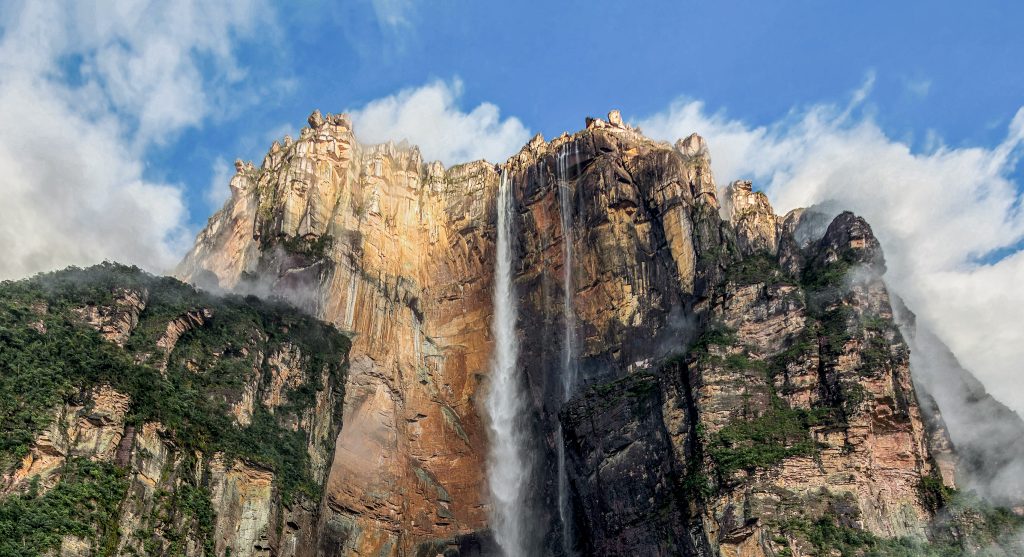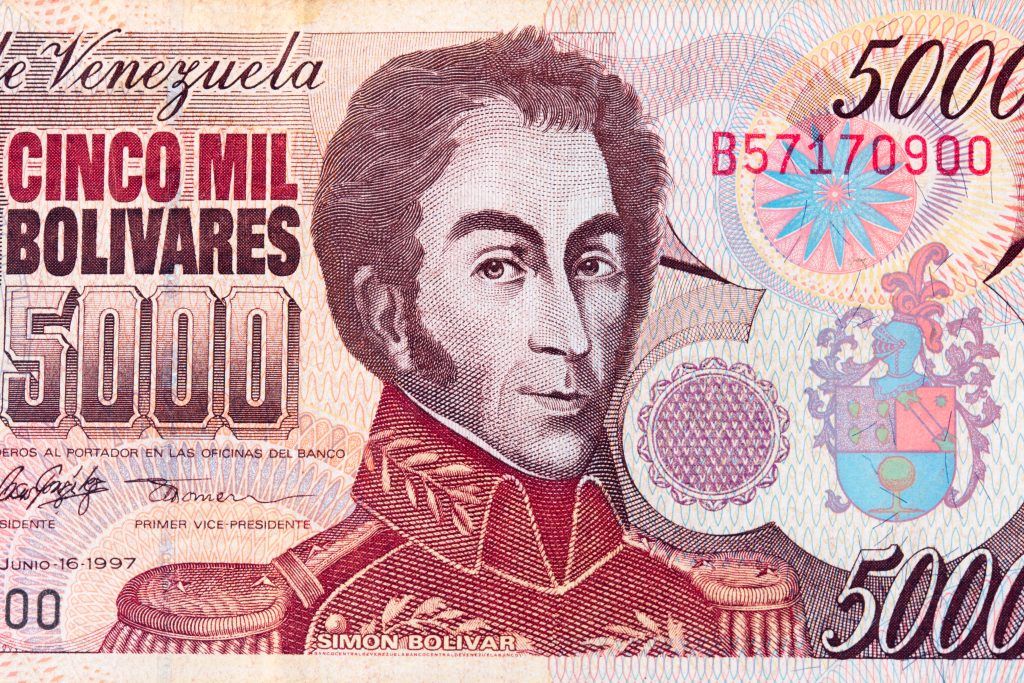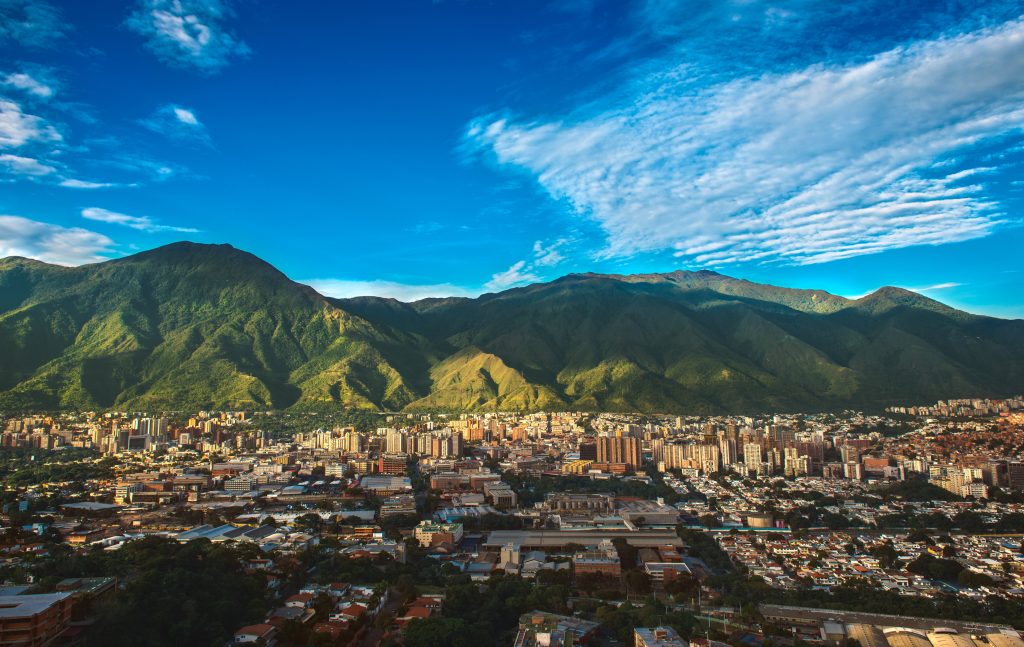The History of Venezuela
From Spanish conquest to the modern day: we retrace the history that has shaped Venezuela, one of the most captivating destinations in all of Latin America.
The Bolivian Republic of Venezuela is considered one of Latin America’s most urbanized countries, with most of its 29-million-strong population living in cities in the north of the country. Nowadays, it is the continent’s largest exporter of oil and home to its largest oil reserve although the ebb and flow of the international oil market have caused intermittent economic struggles in the country over the last three decades.
Like all of its neighbors, Venezuela is a country sharply carved by centuries of European colonisation and land squabbles with its neighbors. Given its economy’s reliance on just a few international exports moreover (oil makes up more than half of the GDP) this is a country that is heavily influenced by external economic issues.
Often making international headlines due to sporadic protesting which has, at times, turned violent, Venezuela is nevertheless often portrayed as an unfavourable travel destination, although its exceptional urbanization makes it, in actual fact, quite a safe place to visit. Most of the country comprises virgin forests and untouched national parks, home to a fantastic array of wildlife.
One of the world’s most bio diverse nations, Venezuela is a wilderness haven, home to some of the most splendid highlights in all of Latin America, including Angel Falls, the world’s highest waterfalls.

We retrace the history of this fascinating country, from pre-Colombian times right up to the present day.
Venezuela – before the arrival of the Spanish
Venezuela may not have been home to formidable ancient cultures like some of its neighbours yet it has been inhabited, nevertheless, for more than 10,000 years before Europeans arrived. Small tribes existed long before the start of agriculture and the creation of the first year-round settlements, which are believed to have sprung up nearly 2000 years ago.
The main indigenous cultural groups were divided among the seaside and mountainous regions, with the latter showcasing much more advanced agricultural skills.
By the time the Spaniards arrived, indigenous tribes in the highlands had developed terraced farming and have since left behind an array of impressive artefacts, whilst seaside communities had taken to living on stilt housing and relying on fishing to survive.
Venezuela – European arrival
When he first set foot in Venezuela in 1498, Christopher Columbus mistakenly thought he’d just landed on another island and it took some time for him to realize that he had, in fact, reached the New World mainland.
So enamoured was he with the sight of the Orinoco Delta, that Columbus thought he’d discovered the Garden of Eden. Yet it was a year later, when Italian explorer Amerigo Vespucci – sailing under the Spanish Imperial flag – arrived in modern-day Maracaibo, that the new country finally got its name. The native’s houses onstilts reminded the Italian of Venice and he renamed the native settlement Venezuela or ‘Little Venice’.

Venezuela went on to become a very important colony in the New World, although at first, and as opposed to many of its southerly neighbours which were heavily exploited for prime materials, the new country’s main role was to act as coastal protector of the imperial fleet which was busy ferrying gold and other treasures from the new colonies back to Spain.
The new land-owners were also busy gathering natives as slaves to be used elsewhere, however, and this gave rise to a fierce indigenous resistance and bloody warfare, one which would continue to plague the country for the next century. The Venezuelan indigenous population, which is believed to have numbered around 350,000 by the time Europeans arrived, was decimated by slavery and the spread of disease.
Even though major settlements were established by the Spaniards in Venezuela, almost all were along the coast and, certainly, all in the eastern regions of the country. By the time Spanish colonial rule was all but over in the Americas, there were still extensive regions of Venezuela that no European had ever reached.

Venezuela’s biggest claim to fame, without a doubt, was that it was the birthplace of Simon Bolivar, the revolutionary leader which is credited with bringing about the beginning of the end of Spanish rule in the New World.
He was born in Caracas, the modern-day capital, and led revolutions to secure the independence of not only Venezuela and the countries which then made up the Viceroyalty of New Granada (Venezuela, Colombia, Panama and Ecuador) but also inspired and guided the liberation of southern colonies like Peru and Bolivia, the latter named in his honour.
Bolivar, dubbed the ‘The Liberator’ back home, would go down as one of the most important and influential historical figures in South America.

Venezuela gained independence in 1821 and was one of the first Spanish colonies to do so. He created Gran Colombia and long dreamed of a unified republic which included modern-day Ecuador, Venezuela, Panama and Colombia (as well as parts of Peru and Brazil) although his Utopian dream lasted merely a decade. Gran Colombia officially split up into separate and independent nations just a year after Bolivar’s death in 1830.
Despite Venezuela’s early independence, it could be said that the extra time it has had to ‘sort itself out’ has been largely mismanaged. Lead by a continuous string of ruthless rulers, the country didn’t enjoy its first democratic election until 1947 and, by then, had suffered greatly at the hands of a century’s worth of civil warfare and consecutive military dictatorships…or the closest thing to it at any rate.
Venezuela in the 20th century – Oil is discovered
The discovery of vast deposits of oil at the turn of the 20th century was Venezuela’s most prominent historical event of the last century and although the country’s wealth
skyrocketed you would’ve been hard-pressed to find one normal citizen who was actually any better off. The obsession with oil production and export, led successive governments to simply neglect other parts of the economy, even going as far as disregarding the upkeep of infrastructure or continued development in the agricultural sector.
Economic booms over the last five decades did result in sporadic spending, from sensational architectural projects in the capital to an influx of designer luxury products from Europe and the USA. Had you visited Venezuela randomly over the last few decades, you would have thought it either the poorest or richest country in the world. It would have all depended on your timing.

Strict austerity measures meant to curb the latest wave of national debt and insane inflation have caused widespread riots in the major cities of Venezuela and this seems to be the most recurring event in Venezuela over the last 40 years.
By the turn of the millennium, it was believed that more than half of Venezuelans were living under the poverty line. Sporadic and drastic food and basic amenities shortages have plagued Venezuelans for decades.
The most prominent Venezuelan historical figure of recent times would have to be its eccentric leader and commander, Hugo Chavez, who ruled the country for 14 years, until his death in 2013.
His socialist ideals and proactive policies, which seemed to have provided temporary relief from poverty, hunger and lack of health-care, were found to be not sustainable in the long run (and especially at the aftermath of the Global Economic Crisis) and although he boasted a strong following, most notably for his anti-US stance, his popularity had all but crumbled away by the time he died of cancer. Megalomaniac or revolutionary idealist? When it comes to Venezuela’s Chavez, it all depends on whom you ask.
Venezuela today
At time of writing, Venezuela is once again beset by a wave of fervent protests. Depending on whom you ask, the current leader (President Nicolas Maduro) is either setting up a dictatorship OR quashing corrupt opposition who seem to be in cahoots with external powers (the US, primarily) to destabilize the country.
As usual, however, aside from political agendas, protesters are objecting to the hyperinflation which has gripped the country (over 500% as of 2017) and the ongoing widespread shortage of both food and medicine. All of this is perhaps based on the fact that demand for Venezuelan oil has been on a sharp decline, worldwide, over the last several years.
Venezuela is currently making headlines again for all the wrong reasons and, as the country’s situation continues to be unpredictable, we urge you to contact us here for the latest information regarding the current crisis and how that might affect your travel plans.
Where Will You Go Next ?
- Popular Destinations
- Antarctica
- The Arctic
- South America
- Central America
- More to explore
- Amazon
- Antarctic Circle
- Antarctic Peninsula
- Argentina
- Bolivia
- Brazil
- Canadian Arctic
- Chile
- Colombia
- Costa Rica & Panama
- East Antarctica
- Ecuador
- Galapagos Islands
- Greenland
- Guatemala & Honduras
- Machu Picchu
- Mexico
- Patagonia
- Peru
- South Georgia and Falkland Islands
- Spitsbergen
- Sub Antarctic Islands

Talk to one of our experienced Destination Specialists to turn your Antarctic, Arctic and South American dream into a reality.
Contact us